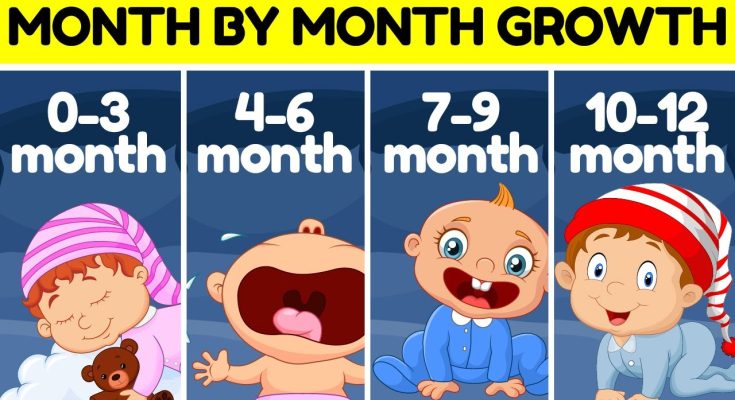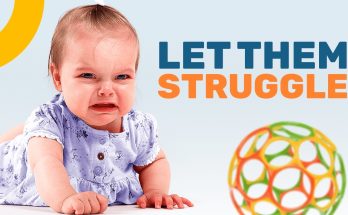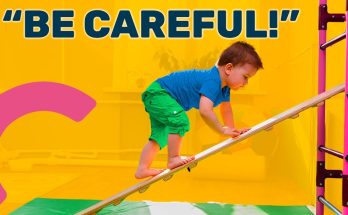The first year of a baby’s life is an incredible journey of growth and development. Babies progress through various physical, cognitive, emotional, and social milestones as they adapt to the world around them. While every baby develops at their own pace, understanding what to expect month by month can help parents and caregivers support their child’s growth. Below is a general guide to baby development during the first year.
Month 1: Newborn Stage
At birth, a baby is adjusting to life outside the womb. In the first month, newborns sleep for most of the day, waking up primarily for feeding. Reflexes such as the sucking, rooting, and grasping reflex are strong. Babies begin to recognize their parents’ voices and may respond to loud sounds with a startle reflex. Their vision is still blurry, and they can only see objects within 8-12 inches of their face.
Month 2: Early Awareness
By the second month, babies become more alert and start developing their first social skills. They begin to track objects with their eyes and recognize their caregivers’ faces. Smiling becomes intentional rather than just a reflex. Motor skills improve slightly, and they may start kicking their legs and waving their arms more frequently.
Month 3: Stronger Movements and Interaction
At three months, babies become more active. They start lifting their heads while on their stomachs and may push up with their arms. Social interactions increase, and babies begin to babble, coo, and respond to voices with excitement. They enjoy looking at bright colors and patterns, and they begin reaching for objects.
Month 4: Rolling Over and Laughing
By the fourth month, babies may start rolling from tummy to back and vice versa. They develop stronger neck muscles, allowing them to hold their heads up steadily. Laughing and squealing become more common as they express joy. Teething may begin, although some babies may not get their first tooth for a few more months.
Month 5: Exploring with Hands and Mouth
Babies at five months old love to explore the world with their hands and mouth. They can grab and hold onto objects, bringing them to their mouths to learn about textures. They may recognize their names and turn toward voices. Rolling becomes more frequent, and some babies start sitting with support.
Month 6: Sitting Up and Trying Solid Foods
At six months, many babies can sit up with or without support. They start showing interest in solid foods, as they develop the ability to move food from a spoon to the back of their mouths. Their first teeth may appear, and their hand-eye coordination improves. Babbling increases, and they may imitate sounds they hear.
Month 7: Increased Mobility
By seven months, babies may begin rocking on their hands and knees, preparing for crawling. They develop better control over their hands, allowing them to pass objects from one hand to the other. They also start showing more attachment to their caregivers and may experience separation anxiety.
Month 8: Crawling and Exploring
Many babies start crawling by the eighth month, although some may prefer scooting or rolling to move around. They begin pulling themselves up to stand and enjoy playing interactive games like peekaboo. Their ability to understand language improves, and they might respond to simple words like “no” or “bye-bye.”
Month 9: Standing and Clapping
At nine months, babies become even more mobile. They may start pulling themselves up on furniture and standing while holding onto support. Their pincer grasp (using thumb and forefinger to pick up objects) develops, making it easier for them to eat small finger foods. They begin clapping, waving, and imitating gestures.
Month 10: Cruising and First Words
By ten months, babies often start “cruising”—walking while holding onto furniture. They become more curious and may begin opening cabinets or drawers. Some babies may say their first words, such as “mama” or “dada,” and their understanding of simple commands grows.
Month 11: Increased Independence
At eleven months, babies show more independence. They may begin letting go of furniture and attempting to stand on their own. They enjoy playing with stacking toys and shape sorters. Their problem-solving skills improve, and they love mimicking adult behaviors.
Month 12: First Steps and Growing Personality
By one year, many babies take their first independent steps. They become more vocal, using a few words alongside babbling. Their personalities shine through, and they express a range of emotions. Their fine motor skills improve, allowing them to use a spoon or drink from a cup with help.
Supporting Baby’s Development
Every baby develops at their own pace, but caregivers can support their growth by engaging in interactive play, providing a safe space for movement, and responding to their needs with love and attention. Regular pediatric check-ups ensure that developmental milestones are on track, and any concerns can be addressed early.



